Beauty does not lie only in the eye of the beholder. According to both classical ideas and modern research, beauty has a lot to do with maths. Humans seem to have an instinctive understanding of what is beautiful which goes way beyond personal preference.
And it’s not just people. Most things we consider attractive, harmonious and beautiful—animate and inanimate, natural and man-made—appear to have something in common. They repeat the same mathematical relationships and patterns over and over. These patterns are found in nature everywhere: in plants and their leaf arrangements, in the spirals of seashells and in the spiral of our own DNA. They are also present in basic geometric shapes and in music. Ancient Egyptians, Greeks and Romans recognised these patterns of balance and proportion in their art, architecture and philosophy.
The Golden Ratio
It has been known for a long time that a harmonious profile or body shape is the result of certain numeric relationships. The ratio most attractive to the human mind and eye is the “golden ratio” (1.618: 1) or the “golden section”, represented by the symbol ? (Phi). It appears as a ratio between various features on the face, body, hands, legs and torso.
At it’s most beautiful the human body, like most other creations of nature, is harmoniously proportionate and beautiful. To see these proportions, look at Leonardo da Vinci’s drawing of the Vitruvian Man. Faces that are considered most beautiful have ideal facial proportions directly related to the golden ratio. For example, in “ideal” faces:
The distances between features can be broken down further:
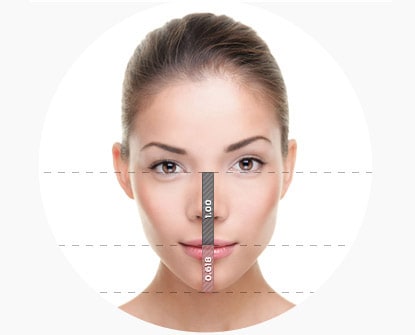
The distance from the chin to the nose is Φ times the distance between the eyes and the bottom of the nose.
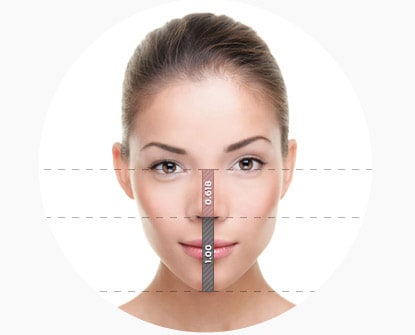
The distance between the eyes and mouth is Φ the distance between the mouth and chin.
Obviously, different cultures and ethnic groups have differing ideas of what a beautiful face looks like, but the variations are in the details, not the proportions.
Applying the Golden Ratio to Your Face
You may be wondering what all this golden section stuff has to do with cosmetic surgery? When your surgeon talks about improving or restoring the “harmony” of your features, he or she is referring, at least in part, to an instinctive reaction to the golden section—or the lack of it—that seems to be innate in humans.
According to Sydney plastic surgeon Dr Steven Liew, universal beauty is associated with proportional curves derived from the golden ratio. Beautiful things are never square. There is always a subtle curve. Youthful faces that are full of volume are always curvaceous. Dr Liew sees beauty in faces that have an “Ogee curve”, a three-dimensional curve in the shape of an ‘S’ where one curve is ? times the length of the other. Putting an Ogee curve in people’s faces make older people look younger and younger faces more beautiful.
“It is probably the most important concept that clinicians need to understand,” says Dr Liew. “Some doctors think they need to plump people up, but you don’t want to do this, because they will then look like balloons. You simply need to enhance the curve of their faces in certain areas. A good doctor is someone who can appreciate beauty, is able to assess what the patient requires, and more importantly, knows how to execute it.”
According to Dr Liew, when we first look at someone’s face, our eyes and minds follow a highly sophisticated route. In a matter of nanoseconds we scan each face, looking at skin tone, skin colour and the overall picture. Then we scan from top to bottom and form a scale through which we judge beauty, unless something is conspicuous, like a large nose or lips that are out of proportion.
Skin Texture is More Important Than Shape
The best approach to enhancing beauty follows the same sequence—first improving the texture of the skin, then correcting the overall face or body shape, and finally focusing on individual features.
In addition to good nutrition, hydration and proper use of sunscreen, there are a number of technologies and a wide range of products that can enhance skin texture, colour and the overall appearance of the skin.
The shape of the face can be similarly improved, not just by changing a particular feature, but also by changing others relative to it, giving the entire face more pleasing proportions. A face that appears too long and narrow can be made to look more oval, a universally beautiful shape. A wide lower face can be made to look smaller with anti-wrinkle injections to relax the muscles of this area. Dermal fillers can help increase the curve of the face where volume and curves have been lost over time.
The Big Picture
Dr Liew encourages doctors and patients to look at the entire face rather than focusing on one particular feature.
Changing certain facial features may work for some people but not others. Ethnicity and personality must be taken into account when changing a face. This is why going to the cosmetic physician and asking for lips that look like Angelina Jolie’s will not work for most people.
If you are considering cosmetic enhancement of any kind, it is a good idea to understand what beauty is all about before making a decision. The more clearly doctors and patients are able to see the entire face or body rather than just one specific part, the more harmonious the outcome will be.
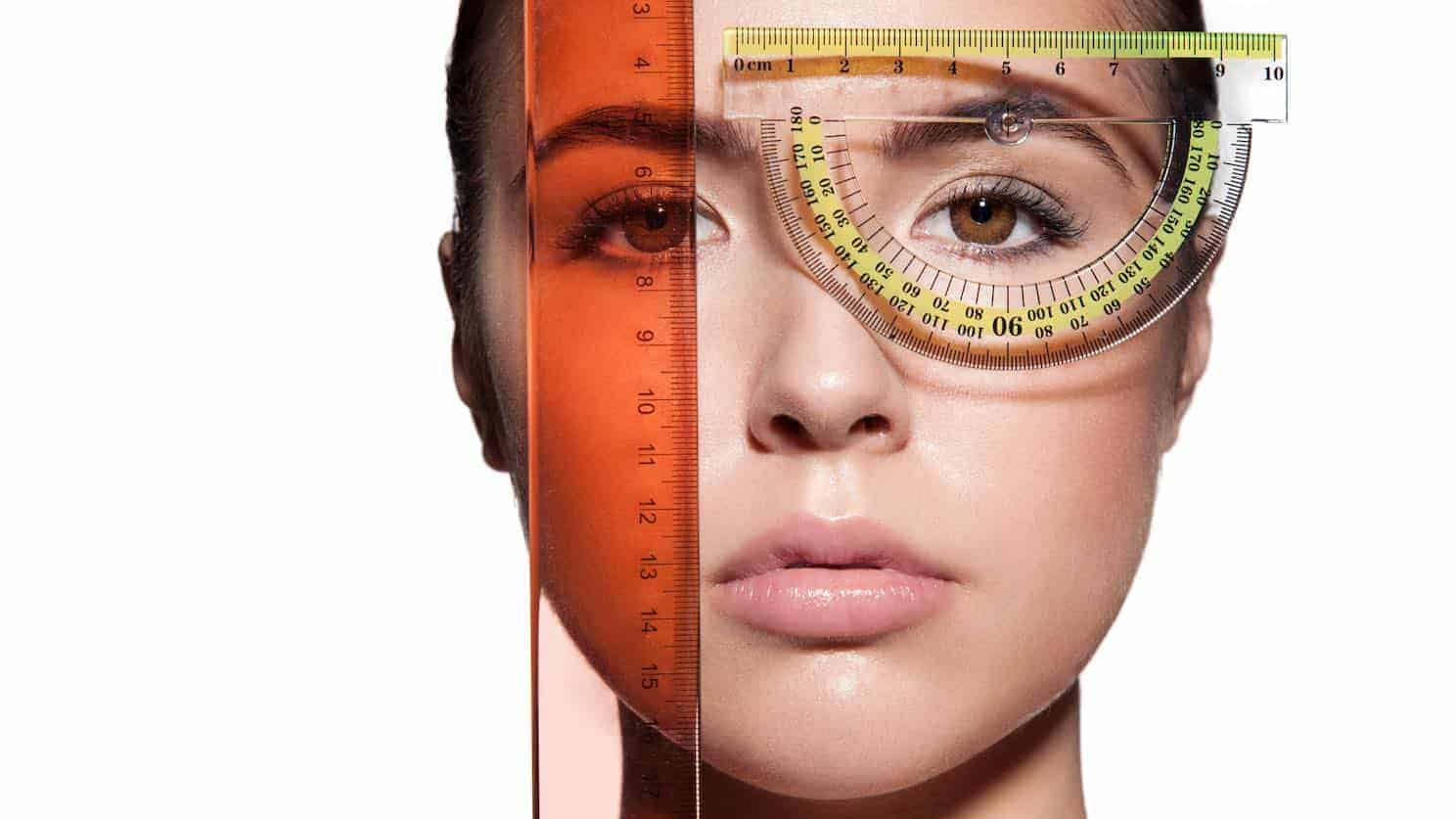
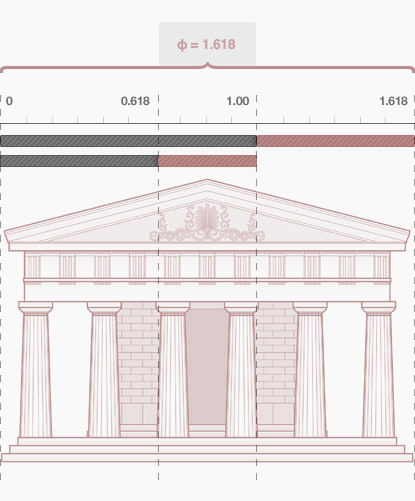
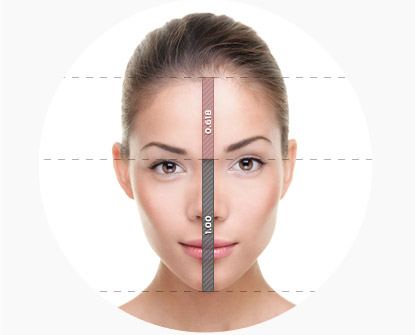
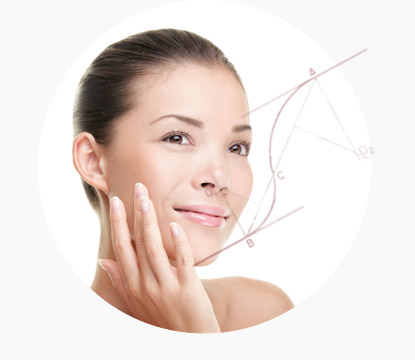
hi there
loved reading this
i already have the ogee curve
high cheekbone
but flat midface
if i get paranasal implants, would this compromise my ogee curve